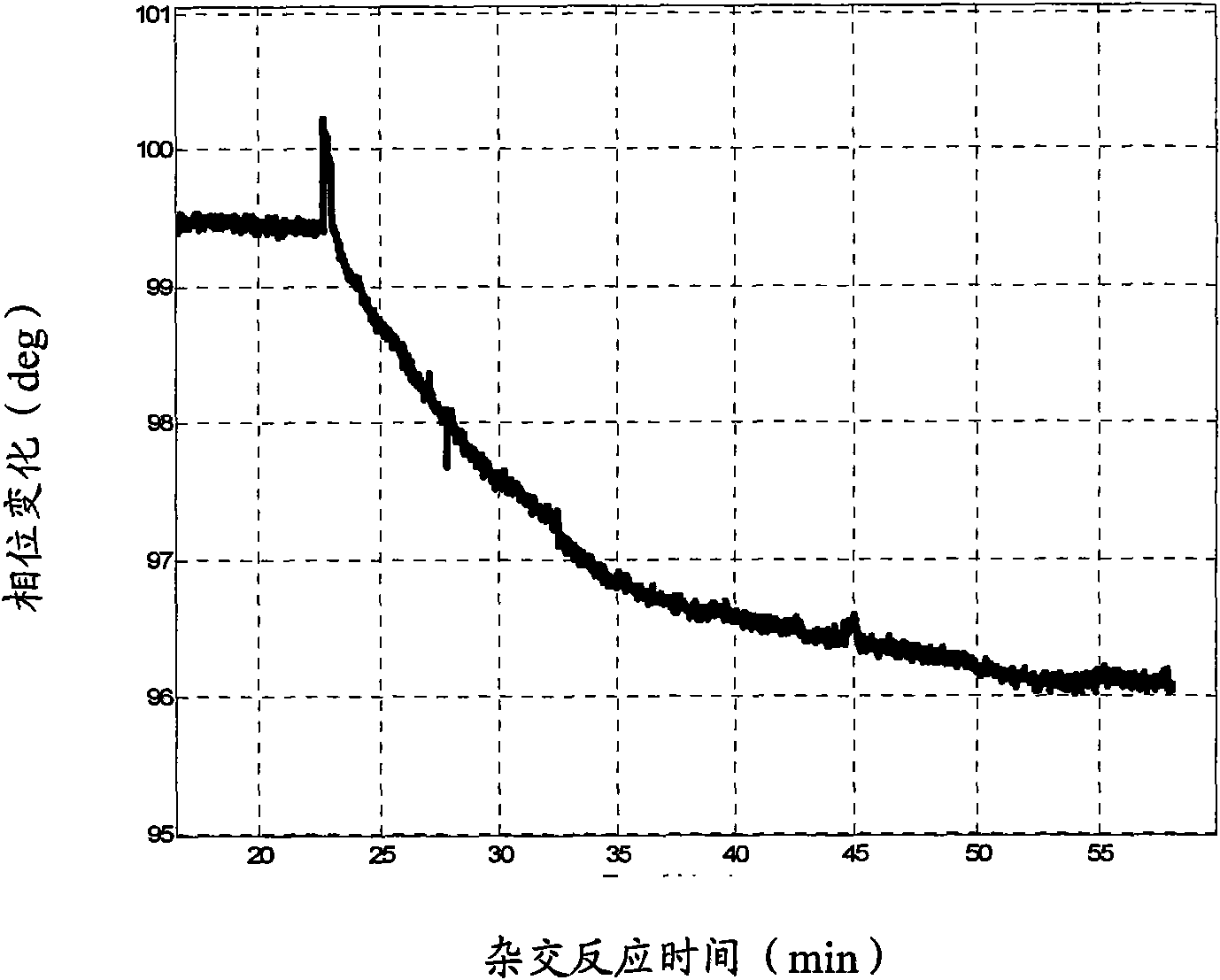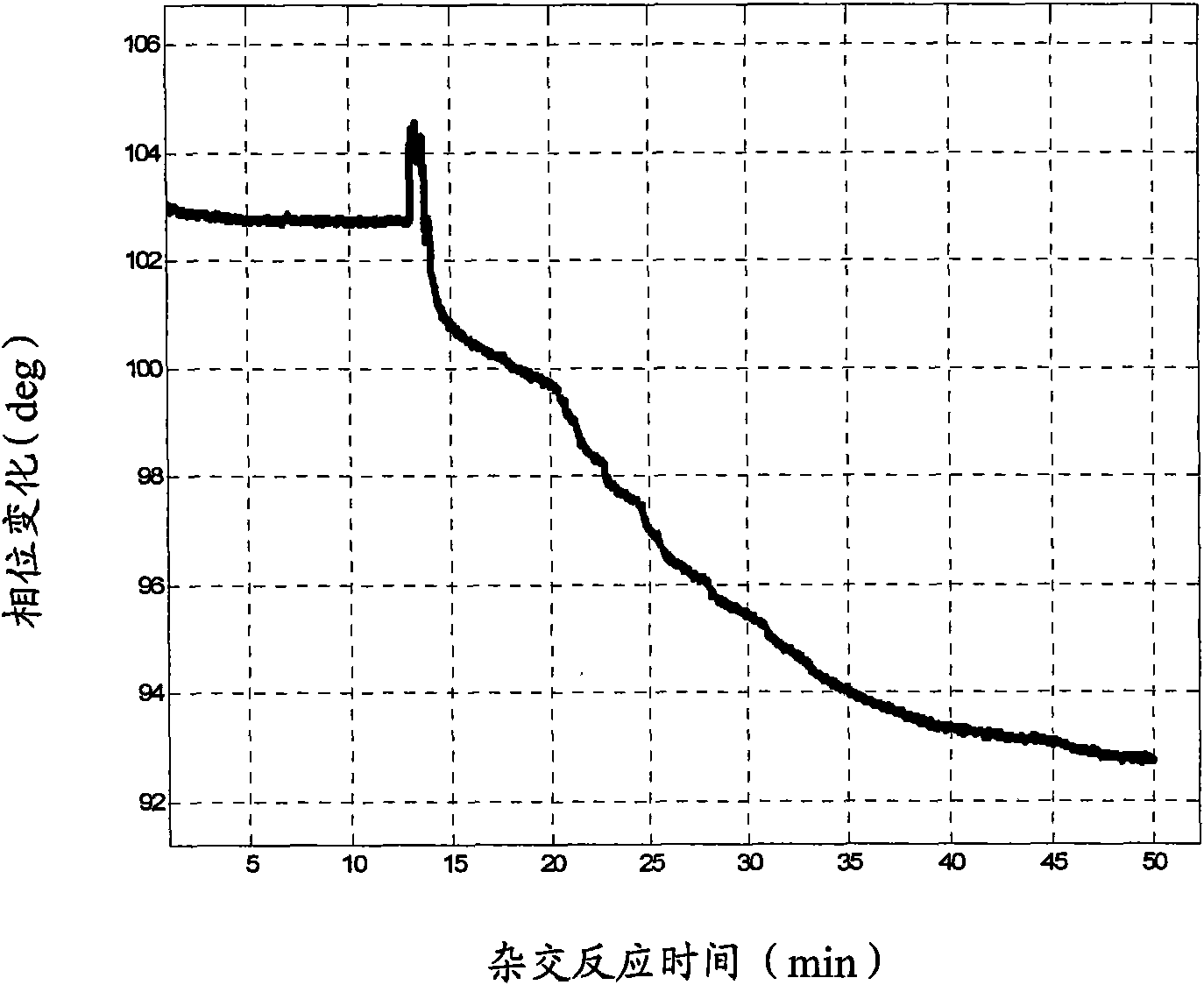Signal amplifying method of leaky surface acoustic wave-binary peptide nucleic acid biosensor
A leaky surface wave, biosensor technology, applied in biochemical equipment and methods, microorganism measurement/inspection, etc., can solve the problems of limited detection sensitivity, small phase change value, long reaction time, etc., and shorten the hybridization reaction time. , improve the mass load, the effect of low cost
- Summary
- Abstract
- Description
- Claims
- Application Information
AI Technical Summary
Problems solved by technology
Method used
Image
Examples
Embodiment Construction
[0022] In order to make the object, technical solution and advantages of the present invention clearer, preferred embodiments of the present invention are described in detail below.
[0023] 1. Experimental materials
[0024] (1) Fabrication of double-ended pair resonant LSAW sensor: in the same piece of lithium tantalate (LiTaO 3 ) two channels for detection and reference are prepared on the crystal, and each channel is composed of an LSAW resonator. LiTaO 3 The crystal is cut and rotated by 36° in the Y direction, and LSAW is propagated in the X direction, and the hybridization reaction between the peptide binary nucleic acid probe and the target nucleic acid sequence is detected by recording the phase change. Gold film and LiTaO 3 Between the crystals is metallic chromium. The interdigital transducer first coats a layer of metal film on the surface of the substrate by vacuum coating, and then uses photolithography to carve the pattern of interdigital electrodes.
[002...
PUM
 Login to View More
Login to View More Abstract
Description
Claims
Application Information
 Login to View More
Login to View More - R&D
- Intellectual Property
- Life Sciences
- Materials
- Tech Scout
- Unparalleled Data Quality
- Higher Quality Content
- 60% Fewer Hallucinations
Browse by: Latest US Patents, China's latest patents, Technical Efficacy Thesaurus, Application Domain, Technology Topic, Popular Technical Reports.
© 2025 PatSnap. All rights reserved.Legal|Privacy policy|Modern Slavery Act Transparency Statement|Sitemap|About US| Contact US: help@patsnap.com



